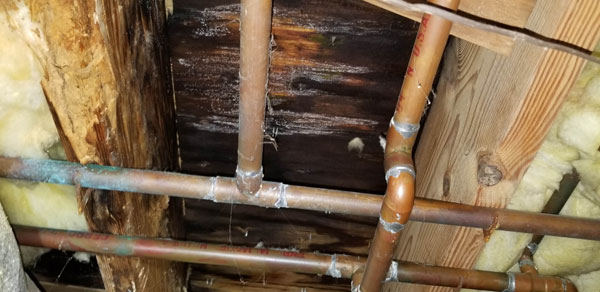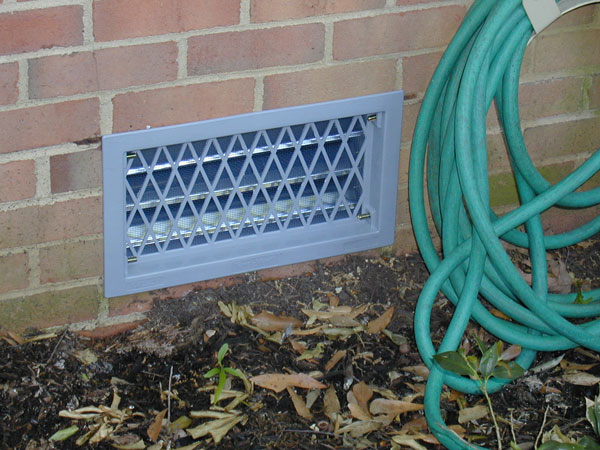There are 4 different common pathways that moisture enters a crawlspace. Sometimes the moisture problem is not a single source but more than one.
- The first is from a domestic source, like a leaking pipe. This is the most easily recognized.

- Next is when surface water during a rain event runs into the crawl through the foundation and foundation vents.
- Third is when the weight and mass of the water table outside the home exceeds the weight and mass of what is under your home, then through hydraulic pressure the water will come up under the foundation.
- The last and most common is caused by thermal dynamics. Basically hot goes to cold
 and wet goes to dry. In a crawlspace in the summer months if there is HVAC ducting in the crawlspace, we will normally see temperatures ranging from 70-75 degrees. So when the temperature is 95 degrees outside, there is a 20-25 degree temperature differential between outside air and crawlspace air. So the much cooler air in the crawlspace will, through the foundation vents pull in warmer air into a cooler environment and this will create condensation on cooler surfaces like ductwork and water lines. This is the source of moisture that will allow mold to amplify in your crawlspace. As a result of this principle the NC building code changed appx 12-15 years ago and started to allow folks to build a home without foundation vents as long as the crawl was conditioned. Summer conditions in crawlspaces are the wettest and winter time is the driest. Warm air has the ability to hold much more moisture than cooler air does. Relative humidity readings above 60% can create an environment that will support mold growth.
and wet goes to dry. In a crawlspace in the summer months if there is HVAC ducting in the crawlspace, we will normally see temperatures ranging from 70-75 degrees. So when the temperature is 95 degrees outside, there is a 20-25 degree temperature differential between outside air and crawlspace air. So the much cooler air in the crawlspace will, through the foundation vents pull in warmer air into a cooler environment and this will create condensation on cooler surfaces like ductwork and water lines. This is the source of moisture that will allow mold to amplify in your crawlspace. As a result of this principle the NC building code changed appx 12-15 years ago and started to allow folks to build a home without foundation vents as long as the crawl was conditioned. Summer conditions in crawlspaces are the wettest and winter time is the driest. Warm air has the ability to hold much more moisture than cooler air does. Relative humidity readings above 60% can create an environment that will support mold growth.
